
My love of porterweeds (Stachytarpheta) really began not in South Florida, where I currently live—and where these flowers are as commonplace as pigeons in Central Park—but way back when I was a landscape design undergrad at the University of Maryland.
I spent my first 26 years gardening in the temperate Mid-Atlantic climate of USDA Zone 7, and let me say: The Maryland gardener is a spoiled one. They can grow anything from the North that can handle a little heat (think peonies and tulips), plus anything from the South that can tolerate some frost (camellias, azaleas and so forth).
Fueled by this broad palette, as a practicing designer I made English-style flower gardens inspired by Gertrude Jekyll. In 2007, when I got a job offer in Miami that I couldn’t refuse, I thought it meant the end of my feminine floral designs. I could only envision my new landscapes looking like Jurassic Park, with oversized foliage and not much else.
But one of my class assignments at UMD had been to design a tropical-looking garden that would be fully winter hardy in Zone 7, which I executed with heavy use of hardy hibiscus and yuccas. About a year after moving to Miami, I recalled this old project and experienced a lightbulb moment: If I could design a tropical-looking garden in a cold climate, why not an English garden in a tropical climate? Thus, I began scouring every nursery in South Florida for anything that looked “Northern” to me—that is, fine-textured, herbaceous and with a heavy sprinkling of small(ish) flowers.
Diese Geschichte stammt aus der May - June 2023-Ausgabe von Horticulture.
Starten Sie Ihre 7-tägige kostenlose Testversion von Magzter GOLD, um auf Tausende kuratierte Premium-Storys sowie über 8.000 Zeitschriften und Zeitungen zuzugreifen.
Bereits Abonnent ? Anmelden
Diese Geschichte stammt aus der May - June 2023-Ausgabe von Horticulture.
Starten Sie Ihre 7-tägige kostenlose Testversion von Magzter GOLD, um auf Tausende kuratierte Premium-Storys sowie über 8.000 Zeitschriften und Zeitungen zuzugreifen.
Bereits Abonnent? Anmelden

Pot It Up
Shake up the containergarden with theseNorth America –native perennials

THE GARDEN PATH TO PERDITION
I WAS CRUISING RIGHT ALONG, feeling okay about myself, when I came across a list of the Seven Deadly Sins.
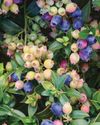
A Productive PATIO
Tiny fruit, vegetable and herb plants help gardeners maximize any sort of growing space
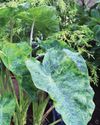
TROPICAL FUSION
A FUSS-FREE APPROACH TO USING BOLD TROPICAL PLANTS IN ANY TEMPERATE GARDEN

WINTER READING
Pass the time with any of these inspiring books
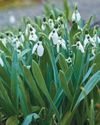
SENSING A PATTERN
Greg Coppa reflects on an odd weather year and what continued warming may mean for his Rhode Island garden
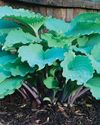
TOP-PRIZE PERENNIALS
A foliage masterpiece for shade and a late bloomer for sun

MARK WESSEL
What's new for fruit and vegetable gardeners?
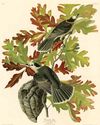
KINGS OF THE NORTHERN FORESTS
A look at the trees, shrubs and perennial plants that bolster life in Ecoregion 5

PROJECT FEEDERWATCH
Gardeners can help scientists know just where the birds are in winter